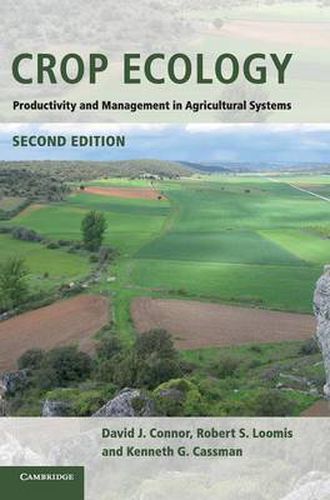Readings Newsletter
Become a Readings Member to make your shopping experience even easier.
Sign in or sign up for free!
You’re not far away from qualifying for FREE standard shipping within Australia
You’ve qualified for FREE standard shipping within Australia
The cart is loading…






Food security and environmental conservation are two of the greatest challenges facing the world today. It is predicted that food production must increase by at least 70% before 2050 to support continued population growth, though the size of the world’s agricultural area will remain essentially unchanged. This updated and thoroughly revised second edition provides in-depth coverage of the impact of environmental conditions and management on crops, resource requirements for productivity and effects on soil resources. The approach is explanatory and integrative, with a firm basis in environmental physics, soils, physiology and morphology. System concepts are explored in detail throughout the book, giving emphasis to quantitative approaches, management strategies and tactics employed by farmers, and associated environmental issues. Drawing on key examples and highlighting the role of science, technology and economic conditions in determining management strategies, this book is suitable for agriculturalists, ecologists and environmental scientists.
$9.00 standard shipping within Australia
FREE standard shipping within Australia for orders over $100.00
Express & International shipping calculated at checkout
Food security and environmental conservation are two of the greatest challenges facing the world today. It is predicted that food production must increase by at least 70% before 2050 to support continued population growth, though the size of the world’s agricultural area will remain essentially unchanged. This updated and thoroughly revised second edition provides in-depth coverage of the impact of environmental conditions and management on crops, resource requirements for productivity and effects on soil resources. The approach is explanatory and integrative, with a firm basis in environmental physics, soils, physiology and morphology. System concepts are explored in detail throughout the book, giving emphasis to quantitative approaches, management strategies and tactics employed by farmers, and associated environmental issues. Drawing on key examples and highlighting the role of science, technology and economic conditions in determining management strategies, this book is suitable for agriculturalists, ecologists and environmental scientists.